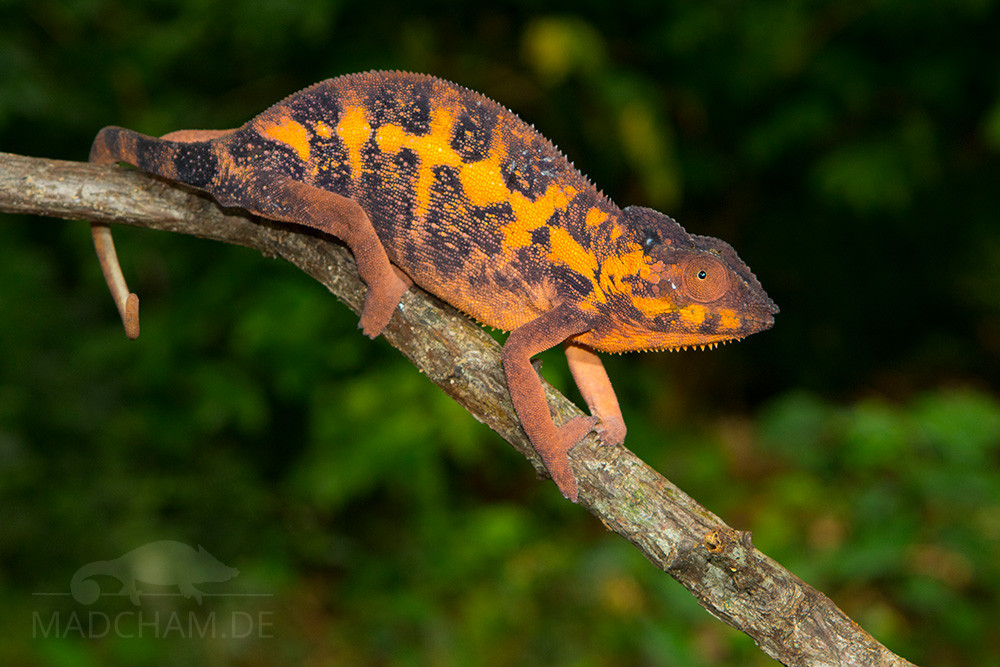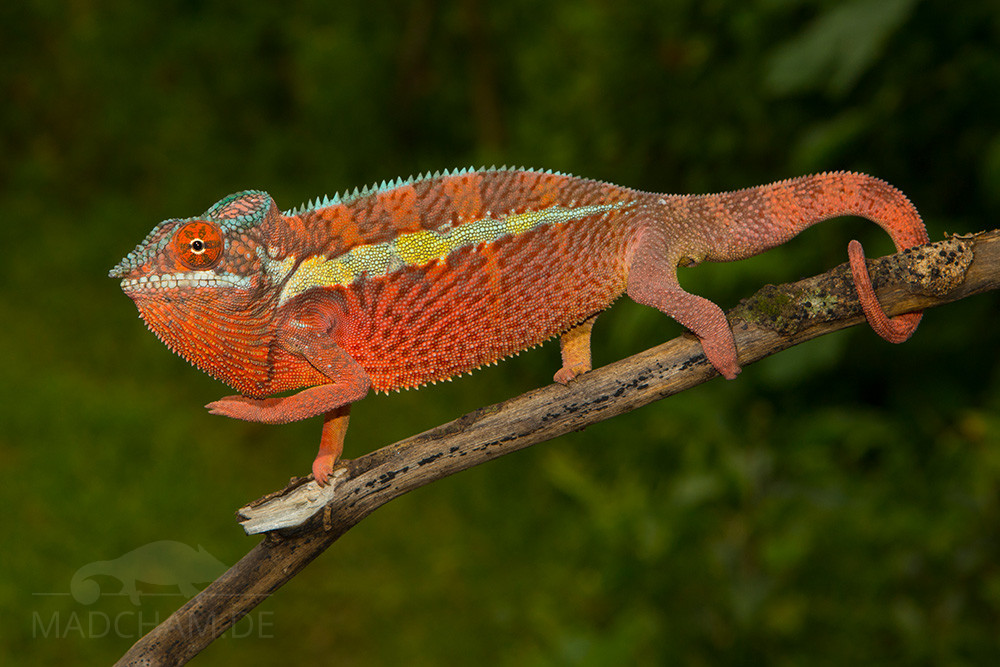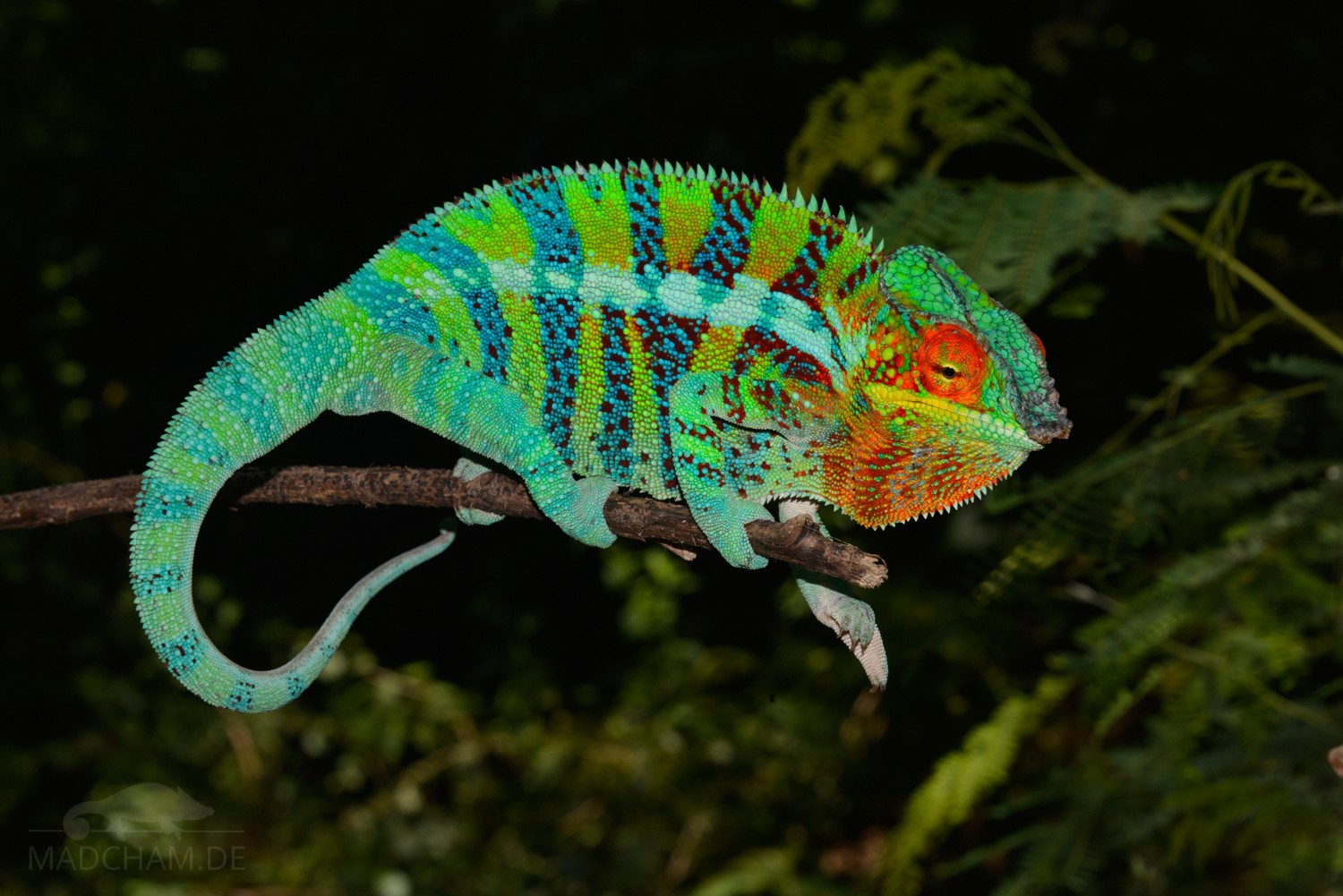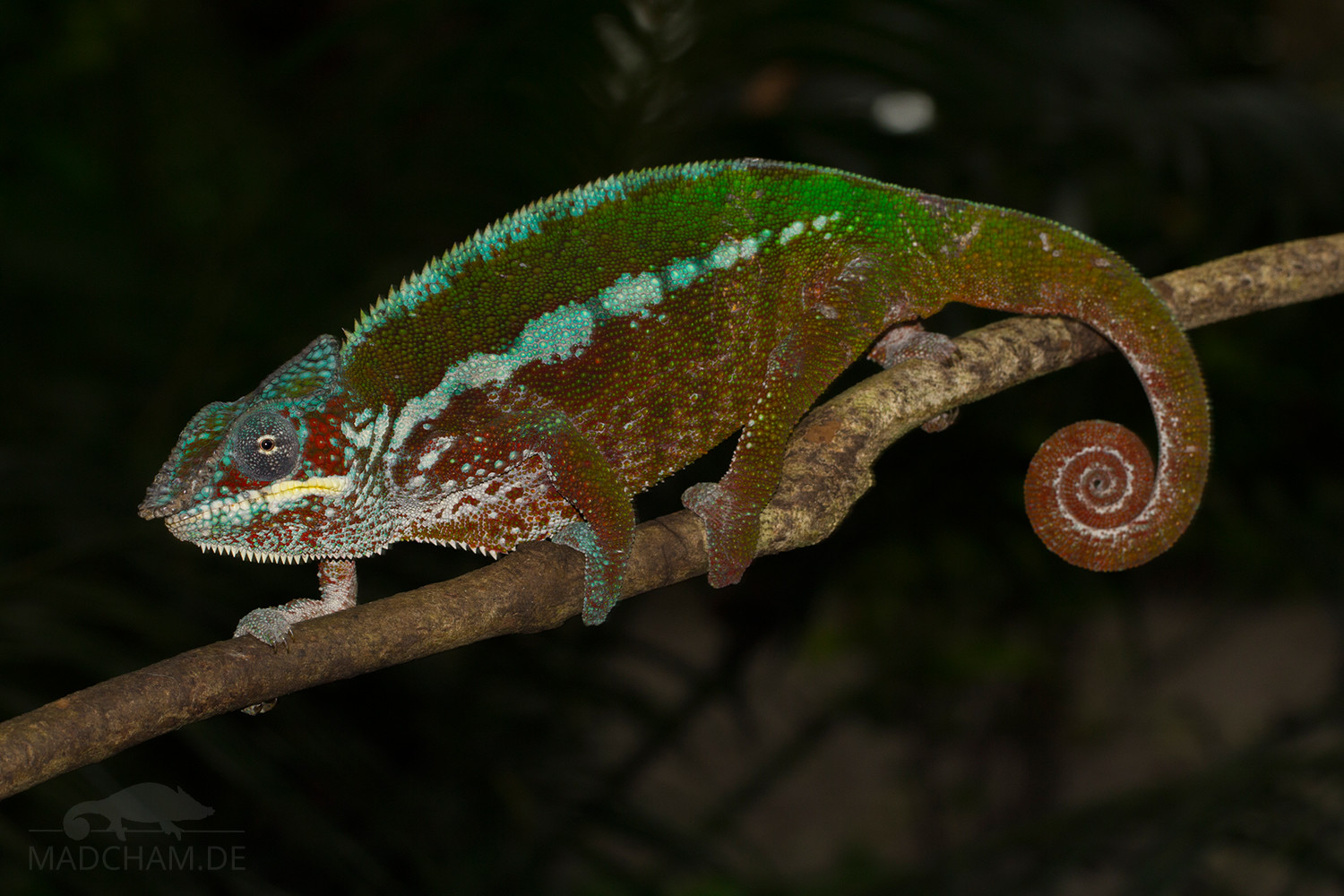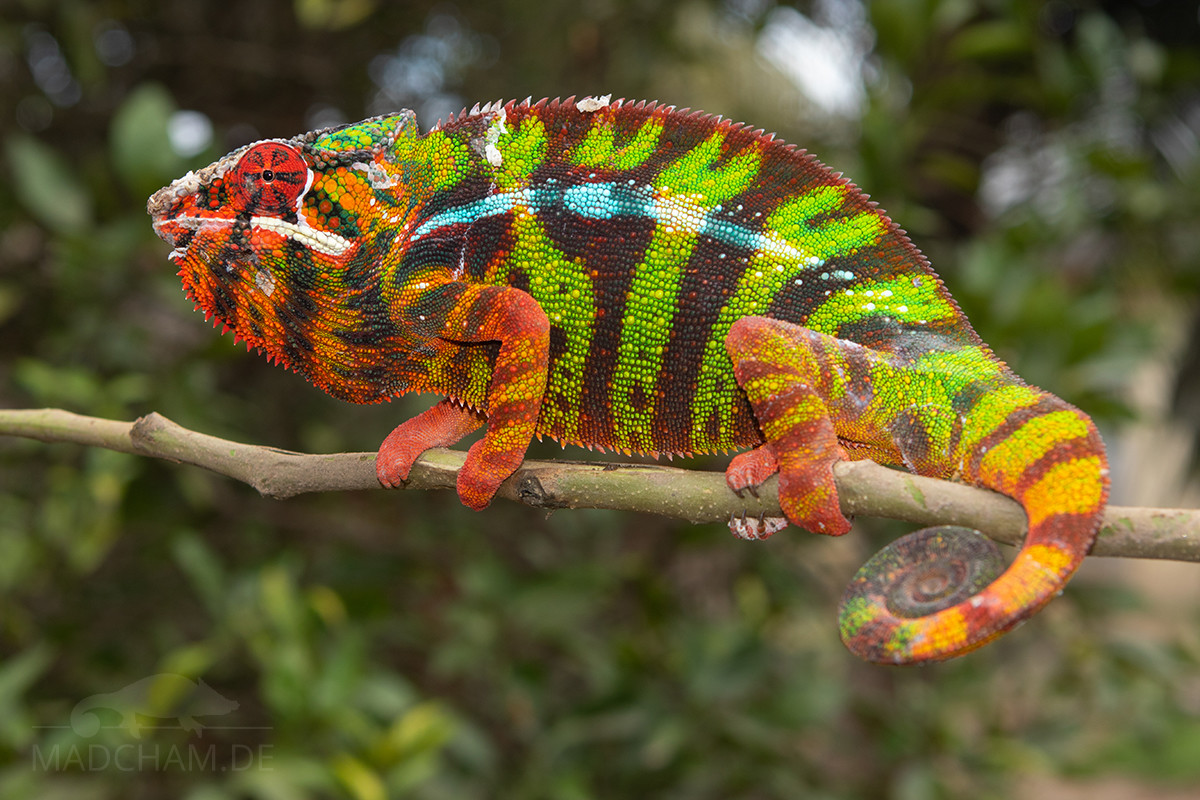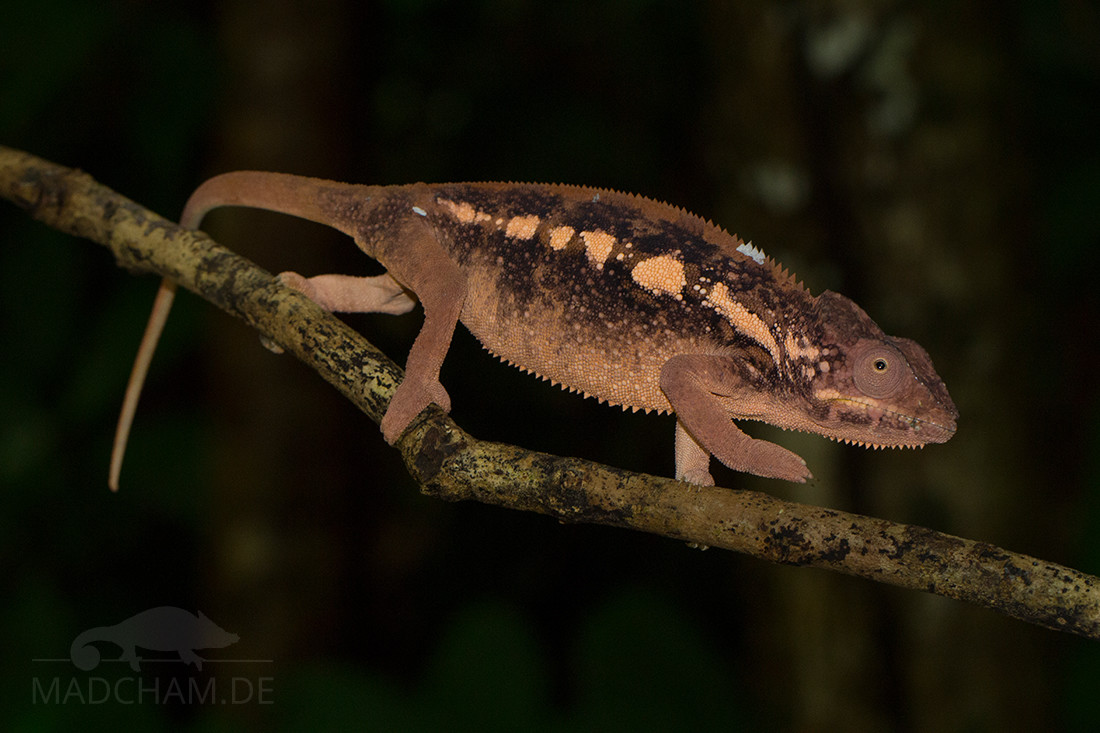2011-13 each 2000 specimens, 2014-23 each 3000 specimens for legal export
First description:
(Cuvier, 1829)
Origin of the species name:
The French zoologist and paleontologist Georges Léopold Chrétien Frédéric Dagobert Baron Cuvier founded the largest anatomical collection in Europe at the University of Paris (France). In his collection, there were Furcifer pardalis from Madagascar, which he mentioned briefly in a single sentence. He described the appearance of the species with “many black spots” – one could speculate that he saw a resemblance to the panther, Latin pardalis. Also in later descriptions of the 19th century some times almost black – probably strongly stressed – animals are still mentioned. Unfortunately, Georges Cuvier did not reveal exactly why he called the species that way.
Distribution:
The probably most famous chameleon of Madagascar mainly lives in secondary vegetation, gardens, and plantations, but can also be found in rainforests. Its distribution is the northern third of Madagascar. Islands such as Nosy Be are part of settled habitats as well as the mainland, coastal areas and rainy national parks in the east of the country. Furcifer pardalis is very common on Madagascar and thus quite easy to find – that is why we already dedicated whole expeditions to this species. It is assumed that panther chameleons with their high adaptability might displace other chameleon species that reproduce less well and that rely on special niches in some regions of Madagascar.
Appearance and size:
Furcifer pardalis counts among the world’s most colorful chameleons. Males grow up to 52 cm in length, while females stay smaller with maximally 38 cm. The casque is rather low and elongated, and the nose has a small, furcated appendage. The gular crest consists of 15 to 20 spines which continue as a well developed ventral crest. The dorsal crest has more than 50 spines. Females of this species are pink or orange-beige colored, sometimes with small pink or green accents. When stressed, all panther chameleons develop dark stripes. In Madagascar, male Furcifer pardalis have developed different color variations in different locations in the course of time – those are called local forms. Since there is a high number of different locales, we gave them an own section on our website. This is also where you can find habitat pictures, climate data and UVB indices from a lot of areas where we were and photographed panther chameleons.
Reproduction:
After a pregnancy of approximately 31 to 45 days, the female lays 15-25 eggs. In very good years, it might be up to 50 – but those amounts are very detrimental to the individual’s lifetime. After 160 to 200 days, the small panther chameleons hatch.
Good to know:
Panther chameleons are among the most popular chameleons kept in captivity because they are relatively easy to keep and have a high color variety with extremely impressive colors. Most breeders try to keep locales pure and only mate animals of the same origin.
Weight table

Since 2015 we have been measuring the weights of chameleons we have found in Madagascar, as far as the animals (and our scales) are concerned. So far there are only a few weights, in the long term, average weight in relation to the snout-vent-length (measured from the tip of the nose to the cloaca) for each species should be read off from as large a number of measurements as possible. It is important to know that all weights were measured towards the end of the rainy season (= best food supply), so they are probably maximum weights in Madagascar. Triangular symbols in females do not mean pregnant, round symbols mean pregnant. In the case of Furcifer pardalis, contrary to our original assumption, there have been no serious differences in the ratio of SVL to the weight of the individual locales.
Climate & habitat:
You can find all data to all the different climates and habitats of Furcifer pardalis in the category “locales of Furcifer pardalis“. Each locale has been described there with its coloration features, pictures of its habitat and climate data.


